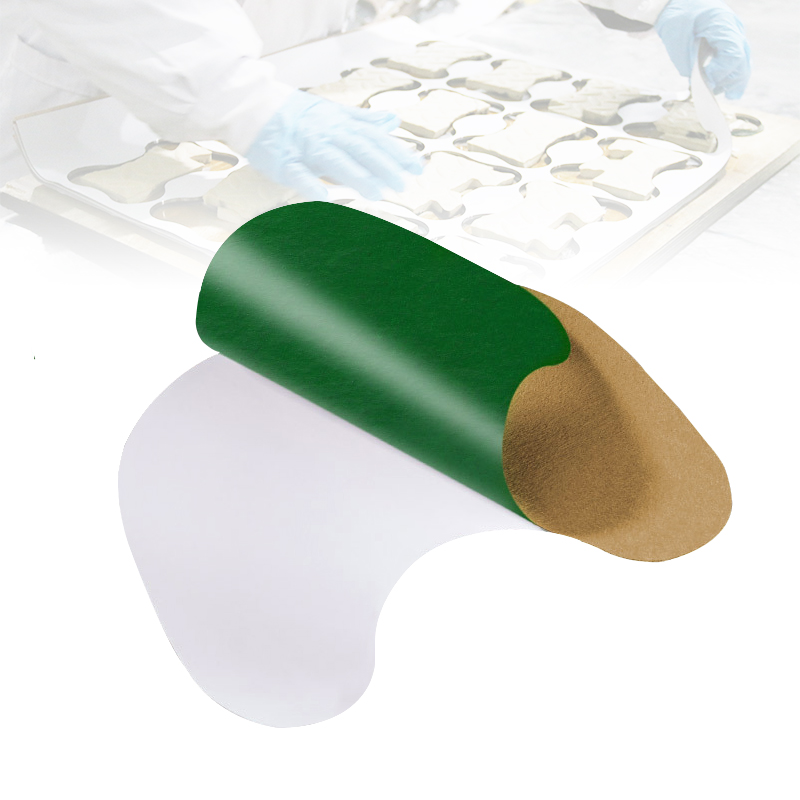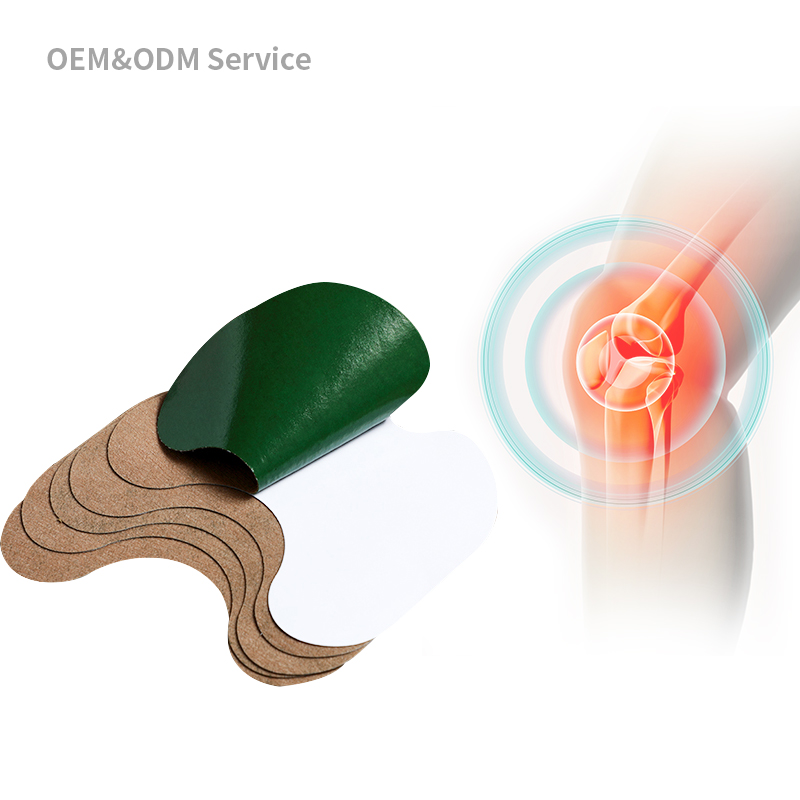What Are the Key Factors Driving the Growth of the OEM Knee Pain Relief Patch Market?
The market for OEM knee pain relief patches is experiencing significant growth, driven by various factors that cater to the increasing demand for effective pain management solutions. This article explores the key factors driving the growth of the OEM knee pain relief patch market. We will examine market dynamics, consumer trends, and technological advancements that contribute to this expansion. Additionally, we will address frequently asked questions related to the topic to provide a comprehensive understanding.

1. Increasing Prevalence of Knee Pain and Related Conditions
Aging Population
The global aging population is a primary driver of the knee pain relief patch market. As people age, they are more prone to conditions like osteoarthritis, leading to an increased demand for pain relief solutions. Knee pain relief patches offer a non-invasive and convenient option for managing chronic pain associated with aging.
Rising Incidence of Sports Injuries
With more people engaging in sports and physical activities, the incidence of knee injuries is on the rise. Athletes and active individuals often seek quick and effective pain relief methods, making knee pain relief patches an attractive option. The ease of use and targeted action of these patches make them ideal for managing sports-related knee pain.
2. Advancements in Pain Relief Technologies
Enhanced Transdermal Delivery Systems
Advancements in transdermal delivery systems have significantly improved the efficacy of knee pain relief patches. Modern patches utilize technologies such as microneedles and nanoparticle carriers to enhance the absorption of active ingredients through the skin. These innovations ensure that the patches deliver more consistent and effective pain relief.
Development of Smart Patches
Smart patches equipped with sensors and connectivity features are emerging as a trend in the knee pain relief market. These patches can monitor pain levels, track usage, and provide real-time feedback to users and healthcare providers. The integration of smart technology adds value to the product and appeals to tech-savvy consumers.
3. Consumer Preference for Non-Invasive Pain Relief Solutions
Avoidance of Oral Medications
Many consumers prefer non-invasive pain relief methods to avoid the side effects associated with oral medications. Knee pain relief patches provide localized treatment, reducing the risk of systemic side effects. This preference for non-invasive solutions is driving the demand for pain relief patches.
Convenience and Ease of Use
Knee pain relief patches offer convenience and ease of use, making them popular among consumers. The patches can be applied directly to the affected area and provide sustained relief without the need for frequent reapplication. This convenience is particularly appealing to individuals with busy lifestyles.
4. Customization and Private Label Opportunities
Custom Knee Pain Relief Patches
Customization is a significant growth driver in the knee pain relief patch market. Manufacturers and OEMs can create custom knee pain relief patches tailored to specific needs, such as varying levels of pain, different skin types, and unique formulations. Customization allows brands to differentiate their products and cater to niche markets.
Private Label Knee Pain Relief Patches
Private labeling presents a lucrative opportunity for businesses to enter the knee pain relief market without investing in manufacturing. OEMs produce high-quality patches that can be branded and sold under a retailer's name. This model offers cost savings, faster market entry, and the ability to build a unique brand identity.
5. Strategic Partnerships and Collaborations
Collaborations with Healthcare Providers
Collaborations between knee pain relief patches manufacturers and healthcare providers can enhance product credibility and reach. Healthcare professionals can recommend these patches as part of a comprehensive pain management plan, boosting consumer trust and adoption.
Partnerships with Sports Teams and Fitness Brands
Partnering with sports teams and fitness brands can significantly increase the visibility and popularity of knee pain relief patches. Such collaborations can lead to endorsements from athletes, who can vouch for the efficacy of the patches in managing sports injuries and enhancing performance.
6. Regulatory Approvals and Quality Standards
Adherence to Regulatory Standards
Compliance with stringent regulatory standards ensures the safety and efficacy of knee pain relief patches. Manufacturers that adhere to international quality standards can gain consumer trust and expand their market reach. Regulatory approvals also facilitate entry into new markets, further driving growth.
Focus on Quality Control
Maintaining high-quality standards is essential for the success of knee pain relief patches. Rigorous quality control processes, including testing for potency, safety, and consistency, ensure that the patches deliver reliable pain relief. Quality control also minimizes the risk of adverse reactions, enhancing consumer confidence.
7. Marketing and Awareness Campaigns
Educational Campaigns
Educational campaigns that highlight the benefits and proper usage of knee pain relief patches can drive consumer adoption. Providing information on how these patches work, their advantages over oral medications, and their role in pain management can influence purchasing decisions.
Digital Marketing Strategies
Leveraging digital marketing strategies, such as social media advertising, influencer partnerships, and content marketing, can increase brand visibility and engagement. Targeted digital campaigns can reach a broader audience and generate interest in knee pain relief patches.
Conclusion
The growth of the OEM knee pain relief patch market is driven by a combination of factors, including the increasing prevalence of knee pain, advancements in pain relief technologies, consumer preference for non-invasive solutions, customization opportunities, strategic partnerships, regulatory compliance, and effective marketing campaigns. By addressing these factors, knee pain relief patches manufacturers, suppliers, and OEMs can capitalize on the growing demand and continue to innovate in this dynamic market.
Frequently Asked Questions (FAQs)
1. What are the main drivers of growth in the knee pain relief patch market?
The main drivers include the increasing prevalence of knee pain, advancements in pain relief technologies, consumer preference for non-invasive solutions, customization and private label opportunities, strategic partnerships, regulatory compliance, and effective marketing campaigns.
2. How do advancements in transdermal delivery systems benefit knee pain relief patches?
Advancements in transdermal delivery systems, such as microneedles and nanoparticle carriers, enhance the absorption of active ingredients, leading to more consistent and effective pain relief.
3. Why do consumers prefer knee pain relief patches over oral medications?
Consumers prefer knee pain relief patches because they provide localized treatment, reducing the risk of systemic side effects associated with oral medications. Patches also offer convenience and ease of use.
4. What are the benefits of custom knee pain relief patches?
Custom knee pain relief patches allow manufacturers to create products tailored to specific needs, such as varying levels of pain and different skin types. Customization enhances product differentiation and caters to niche markets.
5. How can private labeling benefit businesses in the knee pain relief patch market?
Private labeling allows businesses to enter the market without investing in manufacturing. OEMs produce high-quality patches that can be branded and sold under a retailer's name, offering cost savings, faster market entry, and brand identity control.
6. What role do strategic partnerships play in the growth of the knee pain relief patch market?
Strategic partnerships with healthcare providers, sports teams, and fitness brands can enhance product credibility, increase visibility, and drive consumer adoption through endorsements and recommendations.
7. Why is regulatory compliance important for knee pain relief patches manufacturers?
Regulatory compliance ensures the safety and efficacy of knee pain relief patches, gaining consumer trust and facilitating market expansion. Adhering to quality standards minimizes the risk of adverse reactions and enhances product reliability.
By understanding and addressing these key factors, stakeholders in the knee pain relief patch market can effectively navigate challenges and capitalize on growth opportunities.






